Unforgettable Canadian adventures on Bonavista Peninsula include historic sites, hiking trails, puffin-watching and so much more – it’s the perfect getaway for a 3-day visit. Check out this post for a self-guided walking tour of the historic town of Trinity. Explore Skerwink and Fox Trails. Head up to Elliston for a little puffin-viewing. Visit the James Ryan Premises National Historic site. Enjoy this action-packed itinerary with a little something for everyone!
Disclosure: This post contains affiliate links. If you buy something from one of our affiliates, we receive a small commission at no extra charge to you. Thanks for helping to keep our blog up and running!
Table of Contents
Indoor and Outdoor Adventures on Bonavista Peninsula
If you love history, hiking, and birding, you’re going to find more adventures on the Bonavista Peninsula than you’ve got time to fit into your travel schedule! We’ve pared it down to a manageable group of activities that will more than fill a 3-day visit.
Check out our post on what to pack for your NL adventure! Waterproof shoes are a boon!
Day One: Settling in on Bonavista Peninsula
Trinity was full. In fact, finding a place on the Bonavista Peninsula in prime iceberg viewing season was a bit of a challenge. We managed to lock down a 2-bedroom cottage in Champney’s West near Trinity – a perfect location for us, if a little off the beaten track for some.
We’re set to make all our own meals, which is a good thing as restaurants in this neck of the woods are few and quite far in between. Arriving at the cottage, we filled the tiny bar-sized fridge, leaving a few larger items in our collapsible cooler, and set out for a stroll around the tiny but historic fishing village of Champney’s West.
Fox Island juts out into the ocean above the tiny cluster of homes. The Fox Island trail – part of the coastal Discovery Trail system – officially starts at a parking lot on top of the hill leading down to the bay. We hiked past a section of the trail on our evening walk, but Gear Guru climbed across the isthmus to the summit of Fox Island’s prominent headland one evening just before sunset.
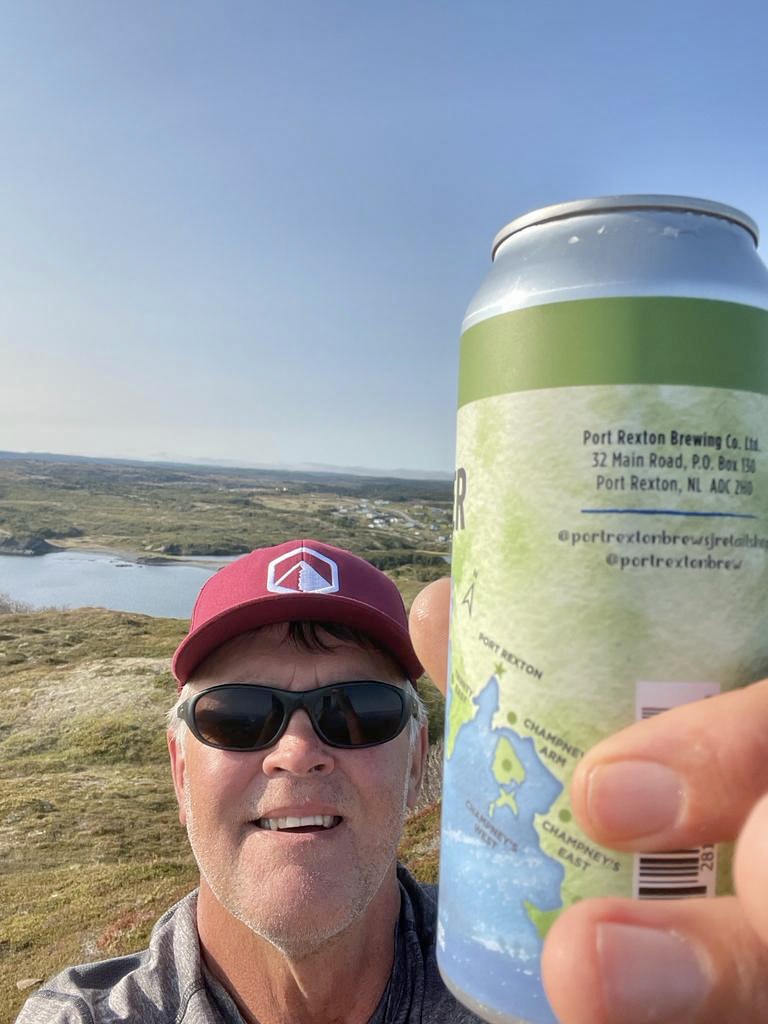
Day Two: Puffins and Premises
With breakfast under our belts, we load up in a light mist and head up the peninsula. Our goals? Puffins and root cellars in Elliston, Ryan Premises National Historic Site in Bonavista, and the Bonavista Lighthouse at the tip of the peninsula.
Two out of three turned out to be the perfect combination.
That’s the thing about travelling in Newfoundland – make plans but be ready to adapt. Ma Nature, unplanned but noteworthy stops at sites that you discover along the way, seafood stores… they all have a way of derailing the planned itinerary.
Like all travel though, when you go with the flow magic happens.
Driving up the peninsula, we head for the number one stop on our list – Elliston. Now, all the marketing brochures I read kept touting this location as the “root cellar capital of the world.” Cool history behind that, but we were heading there for the puffins.
Yup, these cute little guys that can’t help but make you smile. And even as the “mauzy” weather threatened to dampen raincoats and obscure views, we smiled as we headed through the lichen-crusted rocky landscape inland and down to the winding coastline.
Who Knew? Newfoundlanders not only have a variety of regional dialects, they also have quite the collection of unique words. When it’s foggy and misting and the ground is already saturated, and it looks like it’s going to start pouring again – it’s a mauzy day.
Puffins, puffins, puffins please!
The route to Bird Island – and nesting puffins requires a little route-finding. The Visitor Centre was closed – due to lack of funding we were told. We ended up stopping at the John C. Crosbie Sealers Interpretation Centre on Trickem Road and asked for directions.
Taking a wrong turn, we headed left to the ocean when we should have gone right. It took us straight to a seaside memorial and monument commemorating sealers lost. Of course, we had to explore. The bronze statue of father and son Ruben and Albert John Crewe were a sobering introduction to the culture and history of sealing in Newfoundland and Labrador.
But from here could see the light – no, not the sun, the mauzy weather was turning ugly. We could see Bird Island in the distance and faint views of people walking out to see what we supposed were the puffins. Consulting phone maps we found a route and headed towards Elliston Municipal Park.
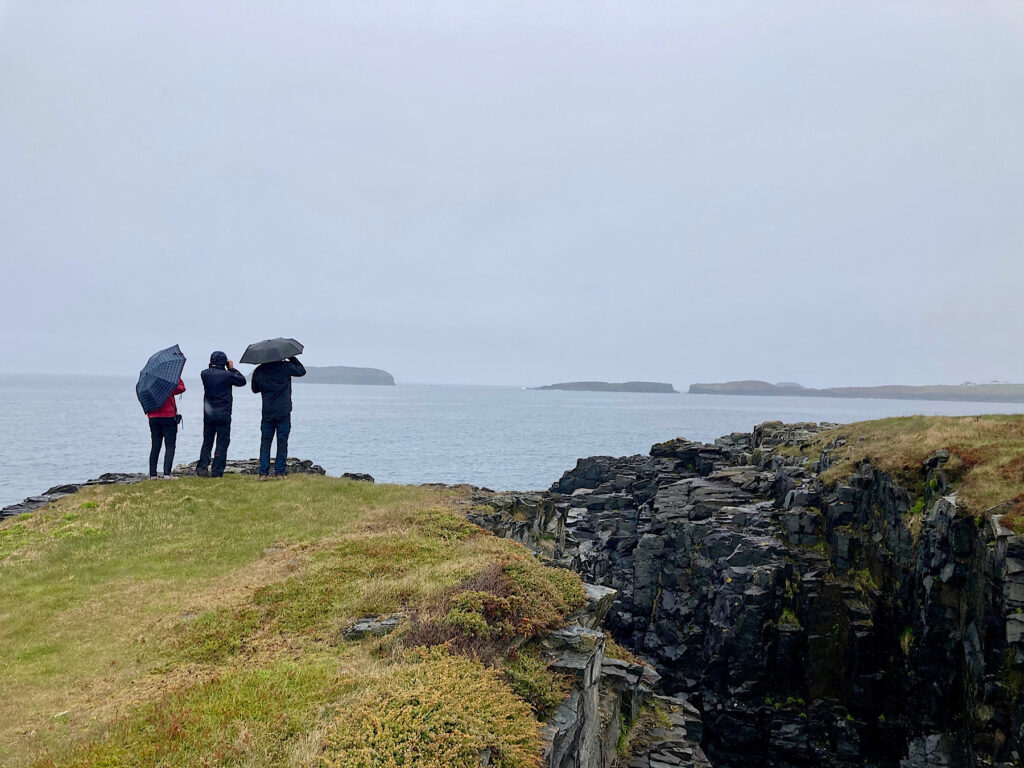
Who’s the richest person in NL? The person who makes the “potholes ahead” signs.
There were a few potholes on the roadway as we wound our way over Bird Island. Less than half a kilometre later (0.3 mi) later we were at one of the best accessible places in the province to see NL’s provincial bird. Donations are accepted but access to the nesting puffins is free.
Bird Crazy Adventures on Bonavista Peninsula
We parked in the gravel lot, crossed the road heading past the historic root cellars to my friend’s favourite bird – and her first time to see them in the wild.
As the rain pelted down, I pulled out my camera and attempted to get a good pic. That’s when I discovered that the battery, I’d been charging overnight, was still in the charger. I handed my umbrella to my friend to help keep the water off her camera lens as she snapped a couple of pics.

And then I started smiling.
Who couldn’t help but enjoy this moment, standing on a rocky headland watching the antics of this tiny puffin colony hopping and awkwardly flying off the cliffs to almost crash land in the white-capped water below.
Root Cellar Capital of the World!
Soggy but smiling, we trudged back to look at a couple of the infamous Elliston root cellars. Truth be told, unlike the puffins, historic root cellars are commonly seen in most communities. These sturdy stacked stone shelters kept food and produce over long winters.
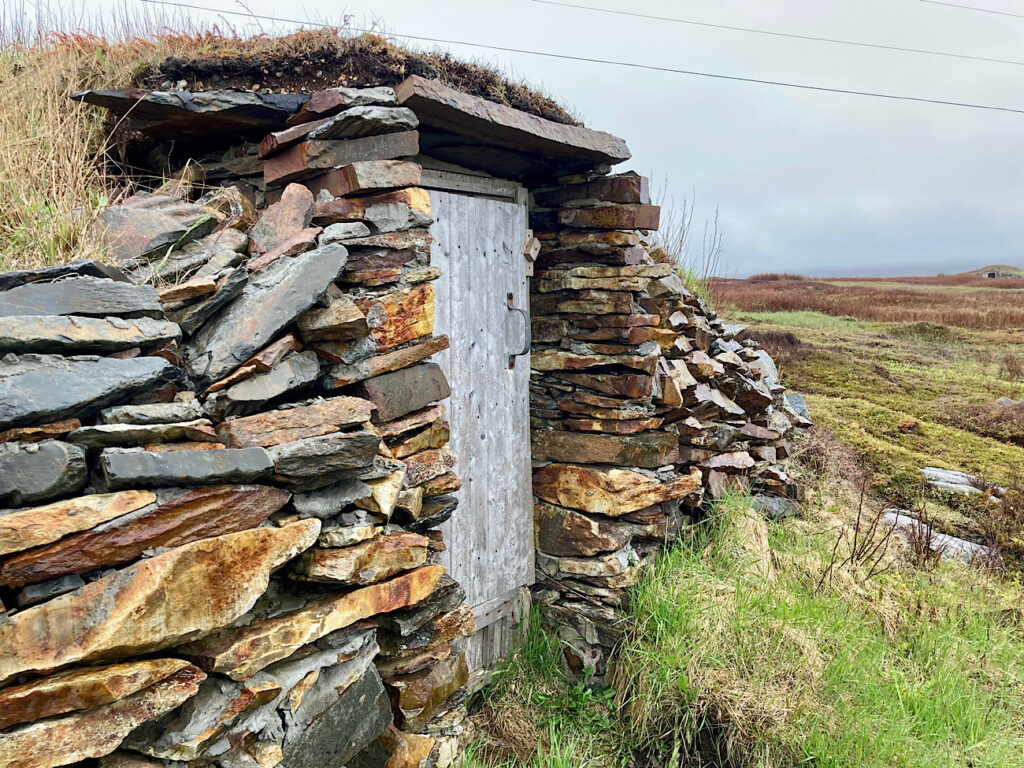
These cellars are a part of Elliston’s heritage. There are dozens and dozens of root cellars dotting the landscape. They are a symbol of the past and one of the many ways locals survived Newfoundland’s often harsh climate. Before refrigeration and electricity came to many coastal NL communities, root cellars kept food from freezing in the winter and spoiling in the heat of summer.
Cool… no, seriously… these cellars are really cool to see!
Bonavista on a Mauzy Day
We left puffins and stone storage spaces behind as we head north towards Bonavista. Damp and chilled, we did a quick search on our phones and parked outside Quintal’s – with the promise of excellent lattes and homemade soups inside.
We weren’t disappointed!
Who Knew? A quintal is a unit used in Newfoundland for weighing fish, especially dried, salted and market-ready cod. It is equal to 112 pounds (close to 51 kg).
Warmed to the cockles of our hearts, we headed to the premises… Ryan Premises National Historic Site, that is! It’s one of Newfoundland and Labrador’s largest salt fish mercantile firms. This Parks Canada site offers cod fishing and processing talks and endless displays about the industry that helped build the province.
Be sure to check out the displays outside the main buildings – especially the replicated fish flake (elevated drying rack) and the owner’s home. Built in 1861 by James Ryan while still a bachelor, he lived in this ornately finished home with his wife Katharine and their sons until the family moved to St. John’s in 1909.
After several hours of learning everything we could want to know about cod, its markets, and the stories behind life in the fishing culture, we all agreed that there were just too many adventures on Bonavista Peninsula! Bonavista Lighthouse would have to wait for another trip to NL.
Day Three: Skerwink and Trinity
Ma Nature took pity on us the following day and let the blue sky and sunshine peek out for a hike along the Skerwink Trail. Twenty or so years ago, it ranked as one of the top 35 trails in North America and Europe by Travel & Leisure Magazine. It still ranks for coastal scenery, birding and – in season – whale and iceberg-watching.
What is a skerwink? Skerwink is the local name for a shearwater. The shearwater is a pelagic seabird species that lives mainly offshore.
Off on Unforgettable Hiking Adventure on the Bonavista Peninsula
We started our hike on the Skerwink Trail at the trailhead parking area in Port Rexton on the road leading down to the Port Rexton brewery – more about that in a minute! A map shows the hiking route – and encourages user to “take a picture of the map as it may help you on the trail.”
Heading out on the 8 km (5 mi) circuit from where we parked, we followed the old roadway lane leading through the woods. Detours? There are as many as you have time!
Our first detour was up “Gun Hill Lookout.” The short side trail climbed up to an interpretive display with flags and an old canon barrel on a hillside. There’s a list of rules and regulations from Fort Salisbury, Ship Cove. This one caught my eye: “The key not to be left in the door at all, especially by night.” Safety first!
The road turned to trail, and we started skirting the cliffy coastline. Rocky beaches, sea stacks and birds – including black-legged kittiwakes – brought the cameras out again and again. No icebergs or whales today – a little too late, a little too early – but the view overlooking the historic town of Trinity and its lighthouse and protected harbour is spectacular. There’s even a handy bench to sit down on and have a snack as you snap another dozen pics!
Looping back around, we headed back towards our car, making one more detour at the Port Rexton Anglican Cemetery. There are always so many stories in stone to discover – like that of Rosa, beloved wife of John Bannister. She passed on January 15th, 1921, at the age of 93! Imagine the tale of her life in this place in the late 1800s!
Brew Time!
Morning hike done we stopped in at the Port Rexton Brewery (6 Ship Cove Rd). After checking out the rustic industrial charm of the renovated schoolhouse building and learning the story of current co-owners and former spouses Alicia MacDonald and Sonja Mills – one a former registered nurse, the other a lawyer – we had a feeling our tasting flights were going to be uniquely perfect!
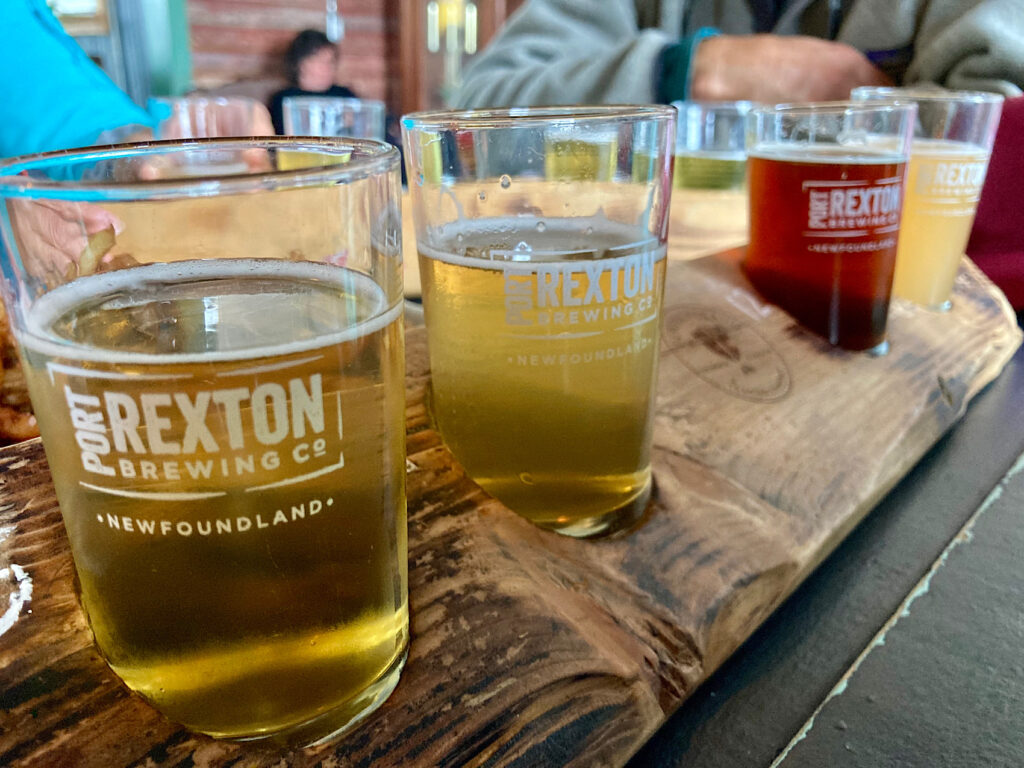
We sipped and savoured the Kolsch and Firemen’s Red. Gear guru loved the Raspberry Sour, and I was sold on Shoulder Season – a golden ale. Ahhh… this day is only halfway done and it’s enough to make one want to sing!
‘Skerwink-y dinky doo… I love you…’ Thanks for the earworm, Randy – and apologies to Sharon, Lois, and Bram for this take on their children’s classic. It’s just that these adventures on Bonavista Peninsula today deserve a little lighthearted ditty!
Time for a Trinity Architchecture & History Tour
Although Trinity is only 8.3 kilometres (5.1 mi) from Port Rexton, it’s a windy back road. Don’t believe Google Maps when it says that it’s a 9-minute drive! It’s a charming route, just don’t expect speed. As we dropped off the hill into town, our jaws simultaneously dropped. Getting out the car we started walking, staring in awe at all the well-maintained historic properties. My friend piped up.
“It’s like walking in a postcard.”
Exactly, Claudette! It is a postcard – with history dating back to the 16th and 17th centuries. It moved from seasonal to permanent fishing station and eventually it became a major trade hub on the northeast coast.
From here we walked up to the old Methodist schoolhouse perched on the crest of a hill. This small, one-roomed Gothic Revival building with gingerbread decoration was built in the mid to late 1800s. The building was open, so we went to check out the displays highlighting the work of Rev. Dr. Clinch and another profiling World War I servicemen from Trinity Bight.
Clinch came to Newfoundland in 1775, settling in Trinity in 1785 where he lived until his death in 1819. He is particularly noted for his role in testing and proving the efficacy of the smallpox vaccine in Trinity and St. John’s – read more of this amazing story here – and for compiling a glossary of terms from the Beothuk – a group of indigenous people who once lived on the island of Newfoundland.
Map your own self-guided tour of Trinity
Be sure to grab a paper map or check out the Trinity Historical Society (QR code on sign near Methodist Church) for the same map of restored historic buildings in town. The historical society’s website also has an accompanying timeline – starting in the 1570s when the area was used as a summer cod fishing station by English Westcountry migratory fishermen.
In 1723 the 100-ton brig Joseph was built at Trinity by Poole Quaker merchant Joseph White. Shipbuilding became another important industry in the area. Benjamin Lester built a large brick house and expanded his shop and counting house in 1764. The Georgian-style brick house was the first of its kind in the province. You can still see the preserved Lester-Garland House today.
In 1833, a small Roman Catholic Church was built on the corner of Water Street and Ash’s Lane. It was built on a piece of land donated by prominent local merchant and magistrate, George Garland. A bell tower was added in 1880. We walked around the building, admiring the carefully preserved original structure.
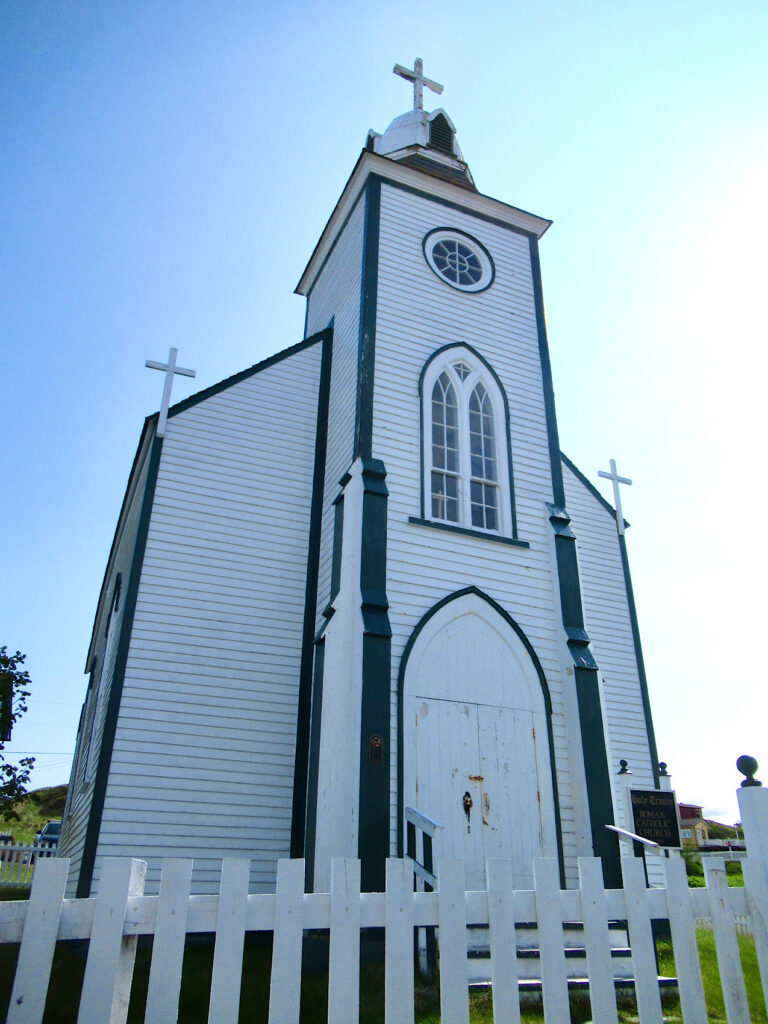
Although the Trinity Museum – housed in an 1880s saltbox style home built by the DeGrish family – was still open for another half hour, we opted to continue our self-guided walking tour. Besides, the Gothic-Revival style Anglican Church with its centuries old graveyard was beckoning just down the street. The church’s records are the oldest in the province with baptisms, marriages, and burials dating from 1753.
What exactly is a saltbox-style home?
When you get to NL, you’ll hear the term “saltbox house” in almost every historic or architectural tour you take. It was named for its shape, which resembled boxes used for shipping salt to Newfoundland.
Commonly built between 1800 and 1850, these houses have two stories in the front but only one in the back. This gives it a short steep roofline in the front and a longer and steeper slope in back. Just don’t confuse it with a biscuit box house! These came later and were named for the rectangular boxes used to ship… you guessed it… hard biscuits.
Building Stories and Historic Adventures on the Bonavista Peninsula
I would have liked to peek inside the Hiscock House – one of 3 provincial historic sites in Trinity – but it was closed. I’d love to learn more about Emma. She moved into this house as Richard Hiscock’s bride when it was built in 1881 and named it Mountain Ash Villa for the tree she planted by the door. There’s still a mountain ash tree there today.
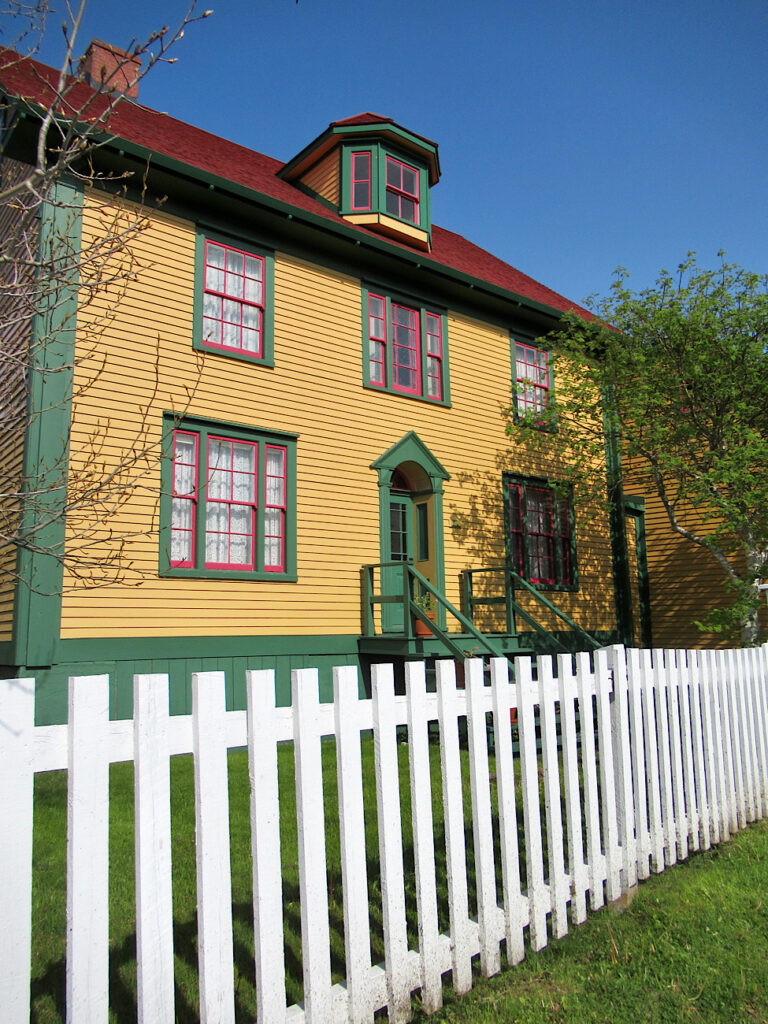
Emma’s husband died in 1893. She was left with 6 children to support. So, she went to work – as a shopkeeper, postmistress, landlady – and all-around entrepreneur! Her story is yet one more reason to come back, planning so that we can stay right in Trinity this time!
We were quickly running out of time. Picking up the pace, we strolled by the 1903 Courthouse & Gaol (read: jail). The first Trinity courthouse was built in 1732, but it was nothing like this beauty. It was noted at one time as being one of the worst courthouses in NL – and in desperate need of repair.
The new three-story wooden courthouse with a mansard roof and tower was constructed by William H. Churchill. Looking up you can see a stained-glass window replacing the original clock tower.
On the Waterfront
Beyond the courthouse are the massive Lester-Garland premises clustered along the namesake waterfront. Benjamin Lester was not only influential in Trinity, towards the end of the 18th century, he became the most powerful and wealthiest merchant in the Newfoundland Trade. That’s both here and in England!
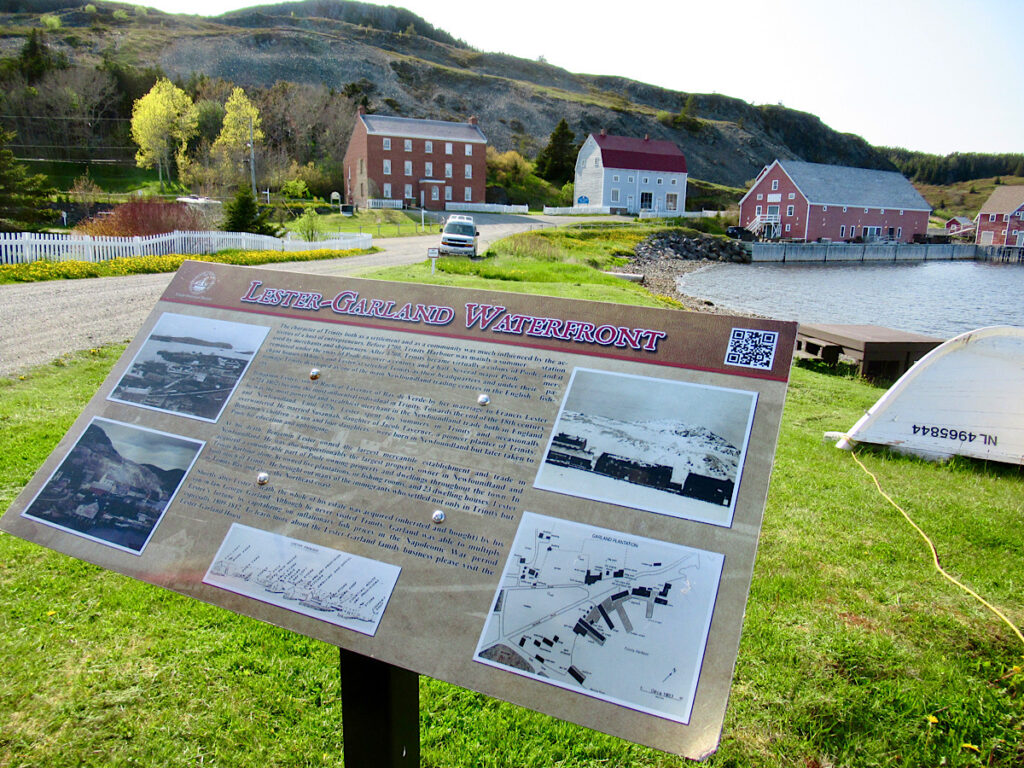
After his death, Lester’s property was acquired – through inheritance and purchase – by his son-in-law, George Garland. Oddly enough, Garland never once stepped foot in Trinity. Huh.
If you love history and architecture and story – be sure to check out the Canadian Register of Historic Places for more information on Trinity’s bounty of historic gems!
When You Go
Exploring the Bonavista Vista Peninsula is an unforgettable Canadian adventure – and one worth your time. A great starting place for more information is Newfoundland and Labrador Tourism.
It takes about three hours to get from St. John’s to Trinity.
Be sure to pack a copy of our hiking journal to record your adventures!

Next time we visit, we plan on bringing our camping gear. If you are thinking along the same lines, here’s a good resource…
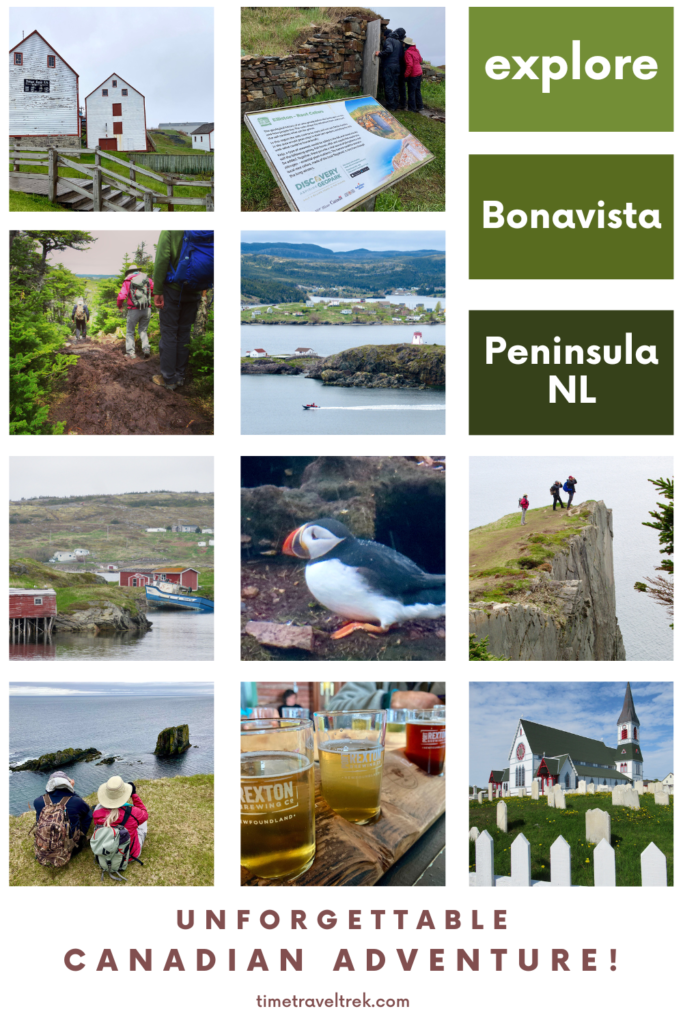
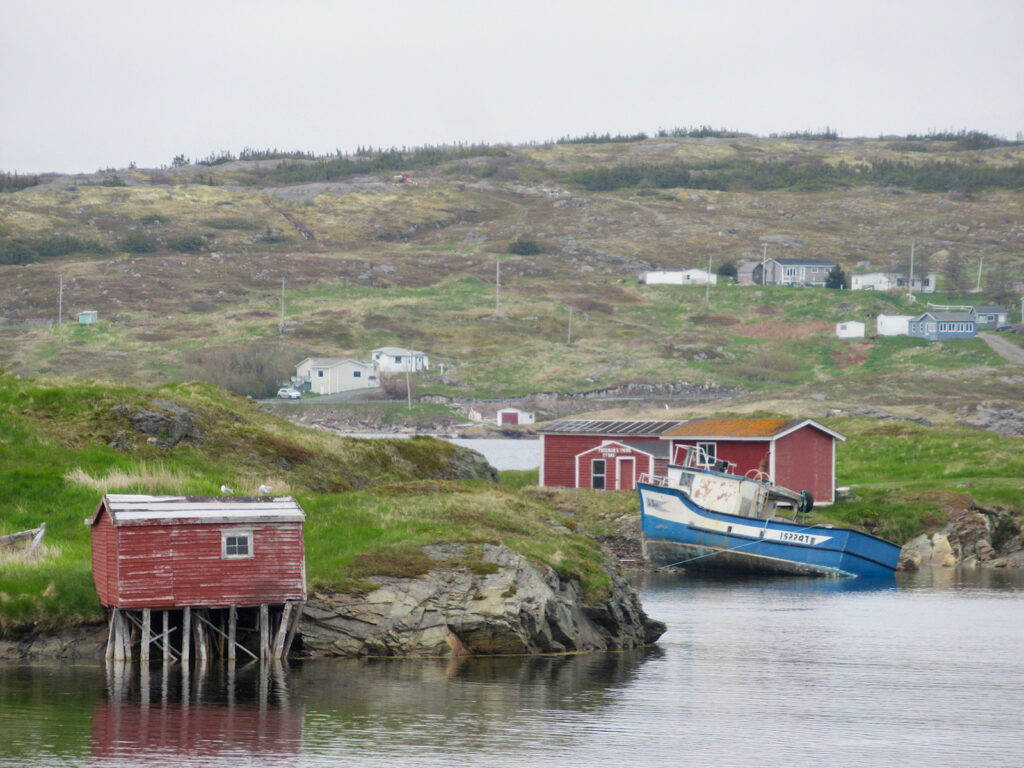





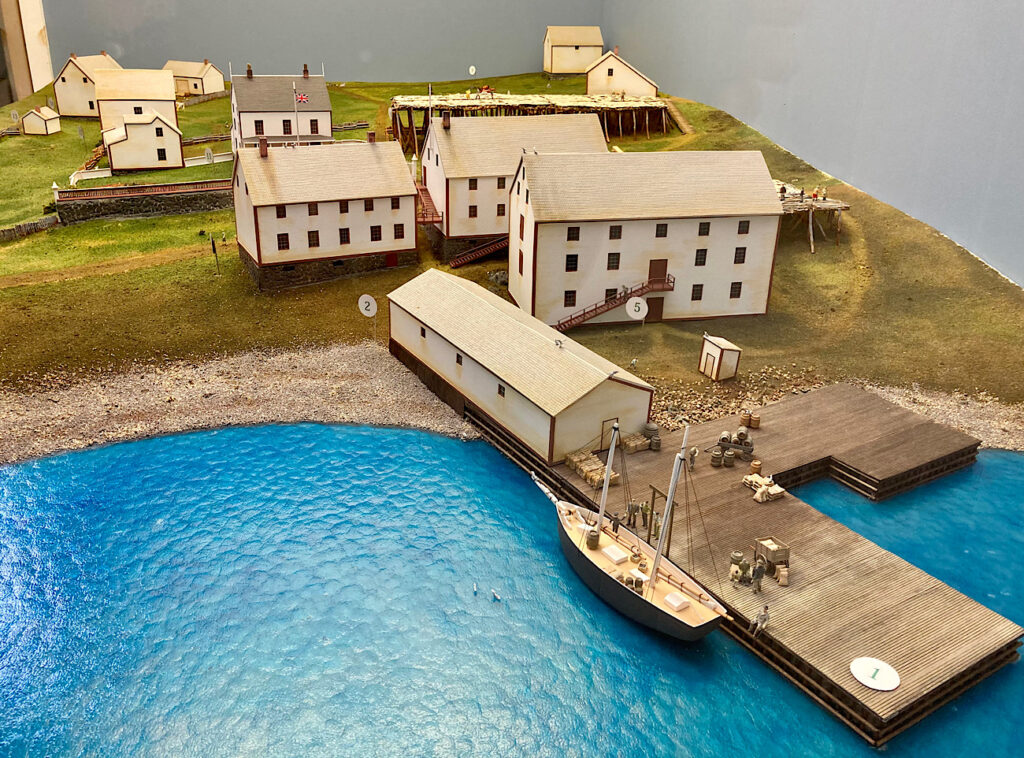
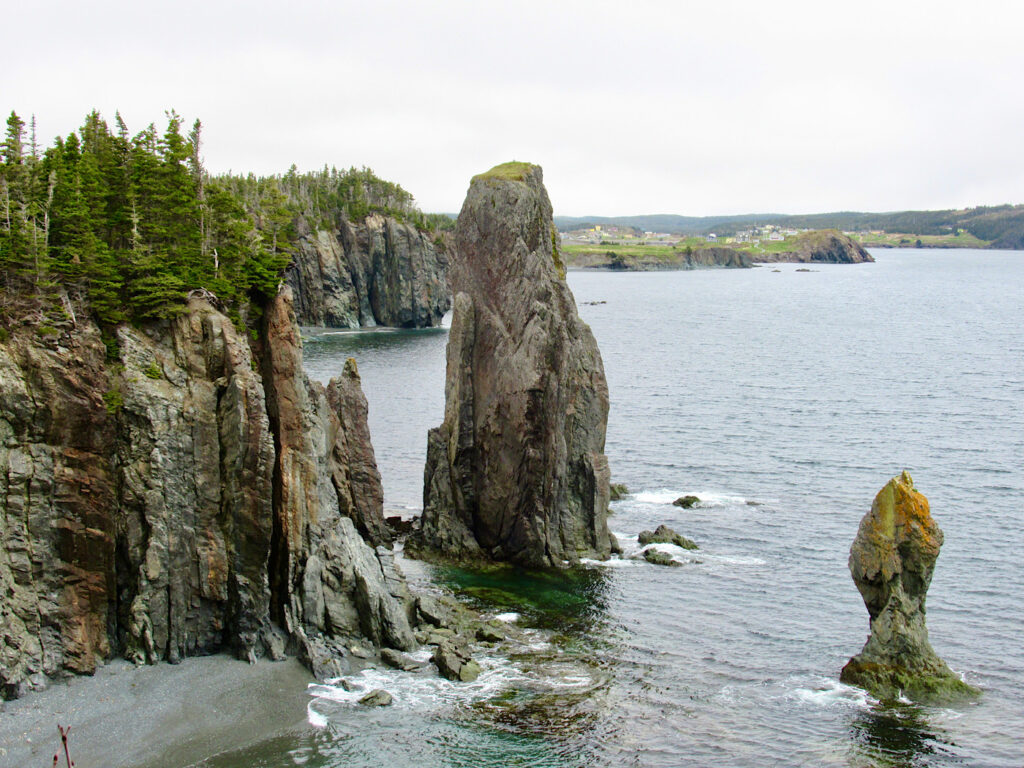



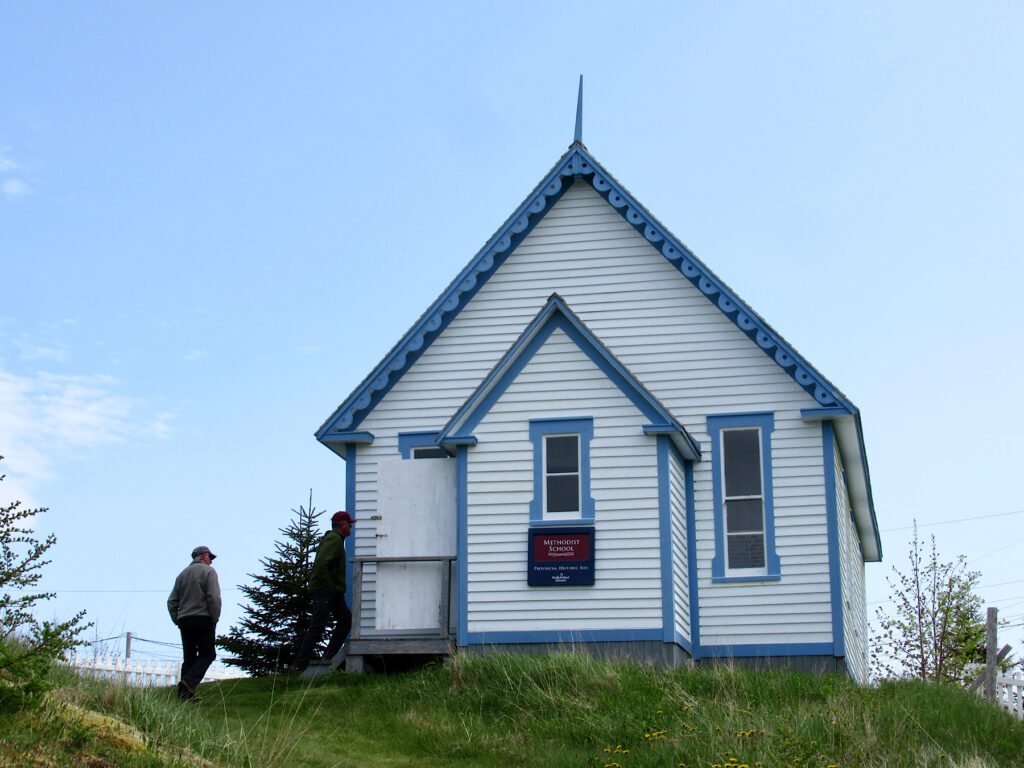
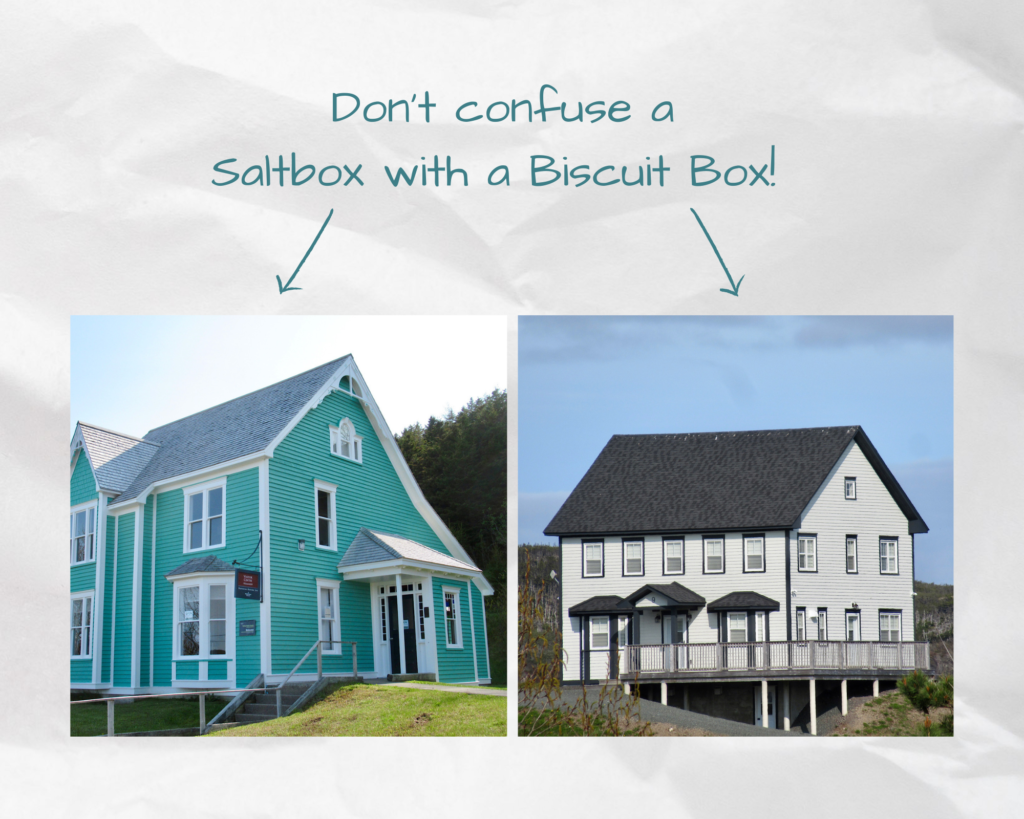

Leave a Reply